Liposuction in Casablanca
Search and Compare the Best Clinics and Doctors at the Lowest Prices for Liposuction in Casablanca

Find the best clinics for Liposuction in Casablanca
With Medijump you can browse 1 facilities offering Liposuction procedures in Casablanca. The cheapest price available is $1,523 in Casablanca. And for the cheapest price globally, prices start from in .
Liposuction in Morocco
Price: $ 1,523
Liposuction in Casablanca
Price: $ 1,523
From 23 verified reviews
Zineb Solaihi, 22 November 2019
Clean clinic very lovely staff
Compare Before & After Photos of _procedure_photos.phpLiposuction
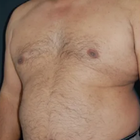
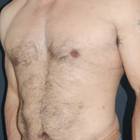
Front view

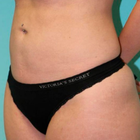
Half-side view
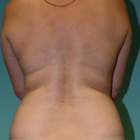
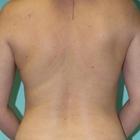
Full-side view
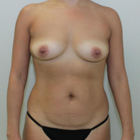

Front view
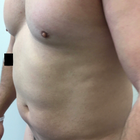

Half-side view
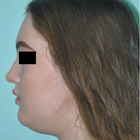
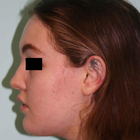
Full-side view
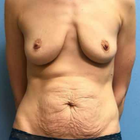

Front view
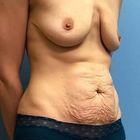

Half-side view
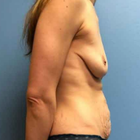

Full-side view
WHY US?
At Medijump, we're making medical easy. You can search, compare, discuss, and book your medical all in one place. We open the door to the best medical providers worldwide, saving you time and energy along the way, and it's all for FREE, no hidden fees, and no price markups guaranteed. So what are you waiting for?

Free

Best Price

Widest Selection

Risk-Free
What you need to know about Liposuction in Casablanca?

Liposuction is a cosmetic surgery that “sucks” out fat from areas that are hard to lose through a healthy diet and exercise, while liposculpture is the shaping of the skin back to its desired shape. Both are done in conjunction with one another at the same time. Most areas can be treated. Traditionally the most popular areas to treat are the stomach/abdomen, chin and neck, love handles, arms, and inner and outer thighs. Becoming more popular are the knees, calves and ankles, all with very successful results.
While liposuction can permanently remove fat cells and alter your body shape, it should not be viewed as a quick fix for individuals who are significantly overweight. The procedure works best for those who have already lost some weight themselves and are close to their ideal weight but need help tackling stubborn areas of fat in problem areas.
What is the cost of Liposuction in Casablanca?
When you're thinking about liposuction in Casablanca, one of the first things you probably wonder about is the cost. Here's the thing: the price isn't the same for everyone. It hinges on a few details like how many parts of your body you’re getting treated, how complex the treatment is, and the professional fee of your doctor. Costs for anaesthesia and the use of the surgical facility are also added to the bill. It's vital to remember, too, that because liposuction is often carried out for aesthetic reasons, normal health insurance might not cover it.
Can Liposuction be used as a weight-loss method?
Unwanted fats are very hard to get rid of especially if you are not a fan of exercise or diet. Liposuction, also known as Lipoplasty, liposculpture suction, lipectomy or simply lipo, basically eliminates unwanted fats by suctioning it away. Despite the growing trend of non-invasive fat reduction treatments, liposuction is still the leading procedure to remove stubborn fat cells.
Liposuction permanently removes fat cells and enhances the shape of your body. A plastic or dermatologic surgeon usually performs this type of procedure on the patient’s belly, hips, thighs, buttocks, arms, back or face to improve their shape. Furthermore, liposuction can be done together with other plastic surgeries such as facelifts, breast reductions, and tummy tucks.
This treatment procedure is particularly used for aesthetics, mainly to improve a person’s appearance. In most cases, maintaining and achieving such positive results will depend on your lifestyle.
What does a Liposuction Procedure Involve?
Before you have the treatment, a series of tests are required to ensure if you are fit for the surgery. You will also need to sign a consent form to confirm that you are fully aware of the risks, benefits and possible alternatives to the procedure.
You will likely be put under using general anesthesia, which can last for 1 to 4 hours. An epidural can also be used for procedures on the lower part of the body, although this is becoming increasingly unpopular now. Alternatively, you may be given local anesthesia if the procedure will be on small areas of your body. You may be asked to stand up during the procedure to ensure proper fat removal, but you will not feel any pain.
Tiny incisions will be made in the areas of interest through which a cannula can fit. This thin tube-like device is connected to a vacuum, capable of suctioning the fat from within your body. There are a few common techniques used, including Laser-Assisted or SmartLipo, UAL (Ultrasound-Assisted Lipo) or the most popular technique, Tumescent Lipo - this involves the pre-injection of a saline solution to help separate the fat from the blood, so less blood is removed. You'll discuss the best option with your surgeon before confirming what type of Liposuction is best for you.
How Long Should I Stay in Casablanca for a Liposuction Procedure?
Generally, patients who have received general anesthesia will be required to spend the night in the hospital (in-patient). Patients, who have had local anesthesia, may be able to leave the hospital on the same day.
After the operation, you will have to wear support bandages (support corset, bandages or elasticated support) whilst healing. Expect some pain, swelling and bruising during the following days and weeks. Your surgeon will prescribe medication to help control your pain and antibiotics to reduce the risk of infection. Furthermore, your stitches may be removed during your follow-up appointment with your surgeon. You should expect to stay in Casablanca for about a week post-op to allow for the initial recovery and check-up appointments, which will include the removal of stitches.
What's the Recovery Time for Liposuction Procedures?
Numbness in the specific area of your body where the fat was removed is to be expected for the first couple of weeks, usually, this will improve after 6 to 8 weeks. You may also need to wait a few days before going back to work. As for your normal activities, especially exercise, you may have to wait a few weeks before resuming.
Overall, the recovery time may vary from patient to patient. In most cases, patients can return to light activities within 2 to 3 days and are also able to go back to work after two weeks. As for the results, you may see visible results after 3 to 4 weeks, however, it can take several months before you see the final outcome.
What sort of Aftercare is Required for Liposuction Procedures in Casablanca?
Just like any other cosmetic surgery, following your surgeon’s aftercare instructions is vital in achieving and maintaining the best results. If the procedure was done above your waistline, you may be advised to sleep propped on pillows to have elevation on the specific area. This helps drain the fluids and prevent them from pooling. Furthermore, applying cold compress on a certain area where the procedure was performed is highly recommended, this will reduce inflammation and bruising especially during the first few days.
What's the Success Rate of Liposuction Procedures in Casablanca?
Liposuction remains one of the most popular cosmetic surgeries with a success rate of 85%, offering patients the enhanced body shape they've been craving. However, just like any other surgeries, it also comes with possible risks. Complications vary and are dependent on the procedure is as well as your surgeon’s skills. Possible risks and complications include:
- Severe bruising
- Inflammation
- Blood clot forms in veins, causing inflammation and complications (Thrombophlebitis)
- Kidney or Heart problems - changes in the body's fluid levels during the procedure may cause kidney or heart problems.
- Pulmonary embolism - when fat gets into your blood vessels and travels to your lungs, eventually, blocking your lungs.
Are there Alternatives to Liposuction Procedures in Casablanca?
CoolSculpting – is a fat freezing liposuction alternative. This is more suited to people who are close to their target weight but still have unwanted pockets of fat. Coolsculpting is a fat-freezing procedure that crystalizes your fat cells until they break apart painlessly.
Ultrashape - a non-invasive procedure that doesn’t require the need for anesthesia. This treatment procedure will make use of a body sculpting device that vaporizes fat cells within the targeted area with waves of ultrasound energy. Fat cells are permanently flushed out of your body, giving you a more natural-looking fat loss.
How does Liposuction differ from CoolSculpting and Vaser liposuction in terms of technique?
Liposuction vs Vaser Liposuction
Like traditional liposuction, the purpose of Vaser liposuction is to change the contours and shape of the body by removing persistent fat deposits. The word Vaser is actually an acronym for Vibration Amplification of Sound Energy at Resonance. This specialized ultrasound technology breaks down the fatty tissues using ultrasonic frequency waves, which is why it's often referred to as Ultrasonic Liposuction or Ultrasound Liposuction.
Liposuction vs CoolSculpting
CoolSculpting is the new non-invasive, freezing method used to also change the body contours and shape, however, this method does not require the use of a cannula so there is no damage to the overlying skin. Instead, it involves the controlled application of cooling localized fat deposits, which are then expelled from the body through the kidneys.
How safe is Liposuction in Casablanca?
Liposuction, when performed in Casablanca by a qualified and experienced plastic surgeon, is generally considered safe. The procedure has evolved significantly since its introduction, with advancements in technology and techniques contributing to its safety profile. Most liposuction procedures are performed without major complications, and patient satisfaction rates are high. However, as with any surgery, there is always an inherent risk.
It's crucial to have a detailed discussion with your surgeon regarding the safety of the procedure. The surgeon should be open about potential risks and complications, and explain how they would handle them should they arise. Factors such as your overall health, medical history and the area or the amount of fat being removed can influence the risks associated with liposuction.
What Should You Expect Before and After a Liposuction?
After your surgery, expect some swelling and discolouration in the areas where the fat was removed. To assist in healing and lessen swelling, you'll be given a snug garment to don. It is advisable to arrange for someone to take you home after the surgery and be with you for the initial day after the procedure. Though some changes will be noticeable soon after the surgery, the best results will take shape once the swelling has fully dissipated, which usually takes around 3-6 months. Regular check-ins with your surgeon are vital to ensure your recovery is progressing as expected.
As the wise saying goes, "Your waistline is your lifeline." Liposuction does remove fat cells for good, but weight gain post-procedure can cause the leftover fat cells to grow, potentially in different areas of your body. Therefore, a balanced diet and regular exercise are crucial for maintaining your new silhouette.
How Can I Prepare for Liposuction in Casablanca?
Prepping for a liposuction surgery in Casablanca? You've got this! Here are some absolutely essential steps you should follow for a smooth and successful procedure:
- Consultation: First things first. Have an in-depth consultation with your plastic surgeon. They'll assess your health status and discuss your goals. Taking this information into account, they'll provide some key instructions for you leading up to the surgery day.
- Healthy Lifestyle: In preparation for the procedure, it's of utmost importance to maintain a healthy lifestyle. Get in regular exercise. Eat balanced meals. Hydrate frequently. If you smoke, now is the time to quit. And hold off on alcohol. Your body will be on the fast track to healing, thanks to these healthy habits.
- Follow Instructions: Your surgeon will give you a set of preoperative instructions. Avoiding certain medications or supplements might be on the list. Stick to these guidelines religiously.
- Support Person: And lastly, on surgery day, make sure to have a trusted friend or relative by your side. Once the procedure is completed, you'll need a safe ride back home.
Whilst the information presented here has been accurately sourced and verified by a medical professional for its accuracy, it is still advised to consult with your doctor before pursuing a medical treatment at one of the listed medical providers
No Time?
Tell us what you're looking for and we'll reachout to the top clinics all at once
Enquire Now

Similar Procedures in Casablanca
Prices Start From $31

Prices Start From $120

Prices Start From $120

Prices Start From $120

Prices Start From $120

Prices Start From $31

Prices Start From $120

Popular Procedures in Casablanca
Prices Start From $111

Prices Start From $931

Prices Start From $76

Prices Start From $236

Recommended Medical Centers in Casablanca for Liposuction

- Interpreter services
- Translation service
- Religious facilities
- Medical records transfer
- Medical travel insurance
- Health insurance coordination
- TV in the room
- Safe in the room
- Phone in the room
- Private rooms for patients available

- Interpreter services
- Translation service
- Religious facilities
- Medical records transfer
- Medical travel insurance
- Health insurance coordination
- TV in the room
- Safe in the room
- Phone in the room
- Private rooms for patients available

- Interpreter services
- Translation service
- Religious facilities
- Medical records transfer
- Medical travel insurance
- Health insurance coordination
- TV in the room
- Safe in the room
- Phone in the room
- Private rooms for patients available

- Interpreter services
- Translation service
- Religious facilities
- Medical records transfer
- Medical travel insurance
- Health insurance coordination
- TV in the room
- Safe in the room
- Phone in the room
- Private rooms for patients available

- Interpreter services
- Translation service
- Religious facilities
- Medical records transfer
- Medical travel insurance
- Health insurance coordination
- TV in the room
- Safe in the room
- Phone in the room
- Private rooms for patients available

- Interpreter services
- Translation service
- Religious facilities
- Medical records transfer
- Medical travel insurance
- Health insurance coordination
- TV in the room
- Safe in the room
- Phone in the room
- Private rooms for patients available

- Interpreter services
- Translation service
- Religious facilities
- Medical records transfer
- Medical travel insurance
- Health insurance coordination
- TV in the room
- Safe in the room
- Phone in the room
- Private rooms for patients available

- Interpreter services
- Translation service
- Religious facilities
- Medical records transfer
- Medical travel insurance
- Health insurance coordination
- TV in the room
- Safe in the room
- Phone in the room
- Private rooms for patients available

- Interpreter services
- Translation service
- Religious facilities
- Medical records transfer
- Medical travel insurance
- Health insurance coordination
- TV in the room
- Safe in the room
- Phone in the room
- Private rooms for patients available

- Interpreter services
- Translation service
- Religious facilities
- Medical records transfer
- Medical travel insurance
- Health insurance coordination
- TV in the room
- Safe in the room
- Phone in the room
- Private rooms for patients available
Liposuction in and around Casablanca
About Casablanca
Casablanca is the largest city in Morocco and is located in the central-western part of the country. Many local and international companies set up their headquarters in this city, making it the primary industrial zone of the country. Casablanca might be the least popular tourist destination in the country, but take a closer look, it does have a lot of hidden gems. Tourists will find many astonishing things to see here. From beaches, markets, culture, to Art Deco architecture, this city is definitely worth a visit.
In line with Morocco’s emerging medical tourism, Casablanca welcomes an increasing number of medical tourists each year. The city is considered to be the most developed market for medical tourists, which in turn as made it one of the leading destinations for medical tourism in Africa. The medical system is divided into two sectors, public and private. The city is known for its modern medical facilities equipped with high-tech equipment. People from the Middle East, Europe, and the United States choose the city for cosmetic surgery and dental procedures, while people from other African countries with inferior medical centers come to have better healthcare. For medical tourists from Western countries, medical treatment in Casablanca is a lot more affordable.
Popular Areas in Casablanca
Casablanca is the main gateway to Morocco and despite only having a few tourist attractions; visitors will find some gems after a little exploration.
- Hassan II Mosque was completed in 1993 and built on a platform overlooking the Atlantic Ocean. Covering around two hectares in size and can accommodate more than 100,000 worshippers, it is the second-largest mosque in the world. The dramatic location combined with the beautiful architecture offers a unique experience of praying.
- The Medina or the old city district is a perfect place to wander around. The maze-like alleyways hide many things waiting to be discovered. Tourists can experience the local’s daily life, have some tasty food in one of the cafes, find traditional treasures in one of its shops, or just stroll around and admire its beauty.
- Cathedral du Sacre Coeur may have been left to waste away in the past decades, but tourists can still see its beautiful structure and architecture. The guardian will sometime let tourists inside to get a sense of the building’s interior. The architecture is a perfect mix of European and Moroccan style.
- Central Market is the place for tourists who want to shop and it is a bustling market where locals buy and sell groceries, but tourists usually come for Morocco’s famous slippers or solely for an opportunity to get amazing photos. Do a little haggling and take home some beautiful local souvenirs.
- Corniche or beachfront district is located in the same region as the Hassan II Mosque. The shoreline is filled with luxury restaurants, hotels, and beach clubs. There is also a public beach packed with surfers and swimmers. During sunny days, especially on weekends, people come to picnic on the beaches, have a refreshing dip in the sea, or splash around in swimming pools.
Weather and Climate in Casablanca
The weather in this charming city can be quiet hot as it has a hot-summer Mediterranean climate. Thanks to the cool Canary current off the Atlantic coast, there are always cool breezes even during the hottest days. The summer generally starts in June and ends in August. June is the driest month in Casablanca and August is the hottest month with an average temperature of around 26 °C. The temperature will decrease in October and the average rainfall will increase in December. Winter starts in December and visitors can expect January to be the coldest month with the temperature ranging from 7 °C to 17 °C. February experiences a lot of rain, making it the wettest month of the year.
Getting Around in Casablanca
Casablanca is home to the country’s primary international airport: Casablanca's Mohammed V International Airport. It is the busiest airport in Morocco, located in Nouaceur Province and the airport operates both domestic and international flights which connect the city to many major cities in the Middle East, America, and Europe. Several budget airlines such as Air Arabia Maroc, Transavia Airlines, and Pegasus Airlines operate flights to and from this airport.
There are plenty of options to get around Casablanca and tourists can try the tram to get a good look at the city. The tram operates from 06.00 AM to 10.30 PM. The line connects some of the main neighborhoods and consists of 48 stops. The most inexpensive way to get around the city is by bus and it costs around 5 MAD. It is best to begin your journey at the designated stops along each bus route instead of stopping a bus in transit.
Taxis are widely available and there are two kinds of taxis: The Red taxi (Petit Taxi) or the White Taxi. The red taxi is a shared taxi, typically by four passengers. The White taxis act like buses with a set route and a fixed price, but the ride is much faster than the bus and you should always pay the driver at the start of your trip.
Tourist Visas in Casablanca
Citizens of 66 countries including Australia, New Zealand, the United States, the European Union, and Japan can enter and stay in the country for up to 90 days without a visa. Citizens of Mali, Guinea, and the Republic of the Congo do not need a visa to enter but must obtain an Electronic Travel Authorization. It is best to always check the current regulations to the Moroccan Embassy or Consulate in your country.
Additional Information
- Local Currency: Moroccan Dirham (MAD) is the official currency. The exchange rate from 1 USD is 9.70 MAD.
- Money & Payments: The easiest way to access money is by the ATMs which can be found easily around the city. Credit cards are mostly accepted in high-end restaurants and hotels. Tipping can be mandatory sometimes.
- Local Language: The official language is Arabic and Berber. French is widely spoken and understood. While English is not widely spoken, there are many people who can speak English, especially in tourist areas.
- Local Culture and Religion: Most of the population are Muslims. Nevertheless, Christianity, Judaism, and Baha’i Faith are freely practiced.
- Public Holidays: The city celebrates Islam religious holidays such as Eid al-Fitr, Islamic New Year, and Prophet Muhammad’s Birthday.
Popular Searches
- Plastic Surgery in Thailand
- Dental Implants in Thailand
- Hair Transplant in Thailand
- Breast Augmentation Thailand
- Gastric Sleeve in Thailand
- Gender Reassignment Surgery in Thailand
- Laser Hair Removal in Bangkok
- Botox in Bangkok
- Dermatology in Bangkok
- Breast Augmentation in Bangkok
- Coolsculpting in Bangkok
- Veneers in Turkey
- Hair Transplant in Turkey
- Rhinoplasty in Turkey
- Stem Cell Therapy in Mexico
- Rhinoplasty in Mexico
- Liposuction in Mexico
- Coolsculpting in Tijuana
- Rhinoplasty in Korea
- Scar Removal in Korea
- Gastric Sleeve in Turkey
- Bone Marrow Transplant in India
- Invisalign in Malaysia
- Plastic Surgery in the Dominican Republic
- Tummy Tuck in the Dominican Republic
- Plastic and Cosmetic Surgery in Poland
- Rhinoplasty in Poland
- Hair Implant in Poland
- Dental Implants in Poland
- IVF in Turkey
